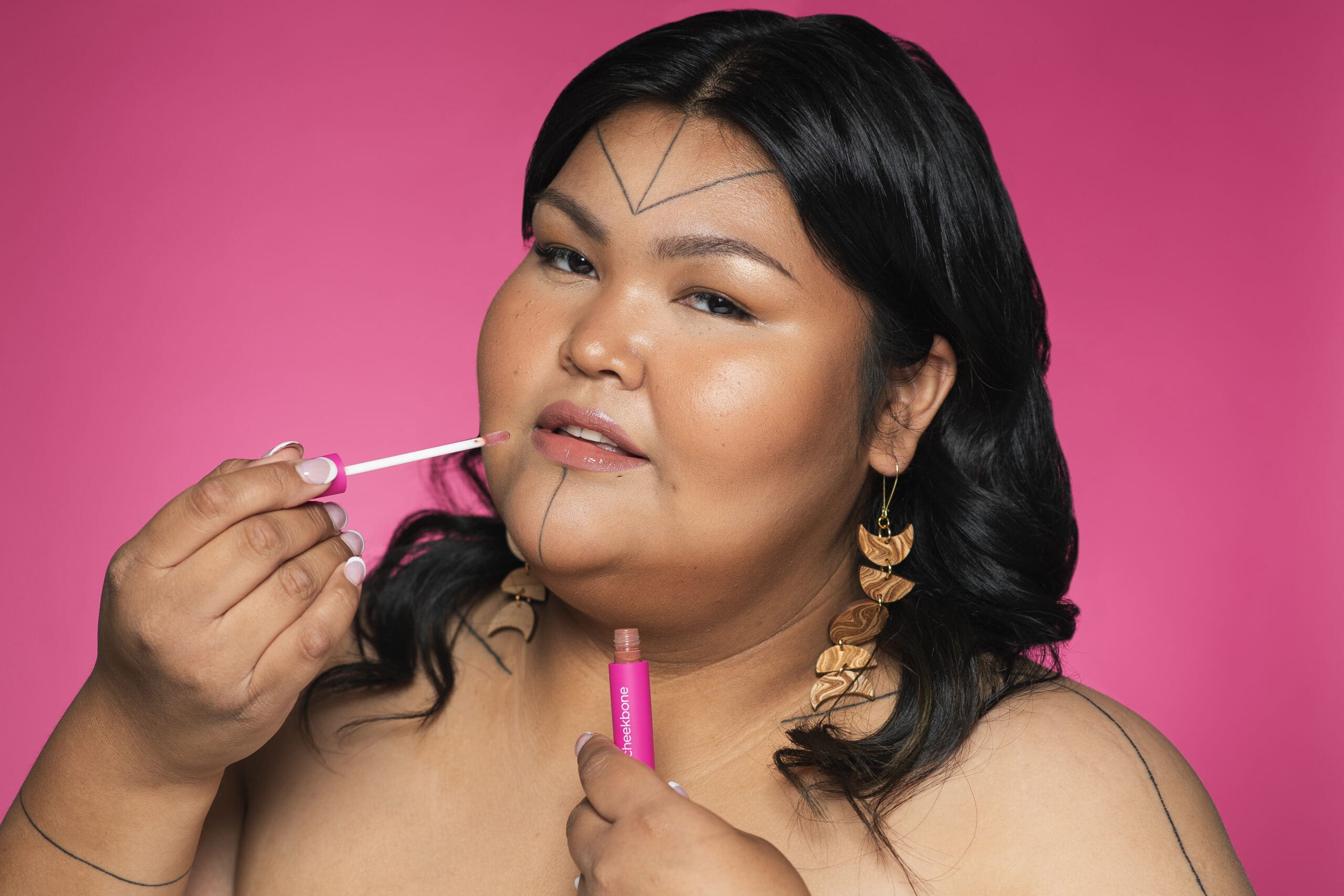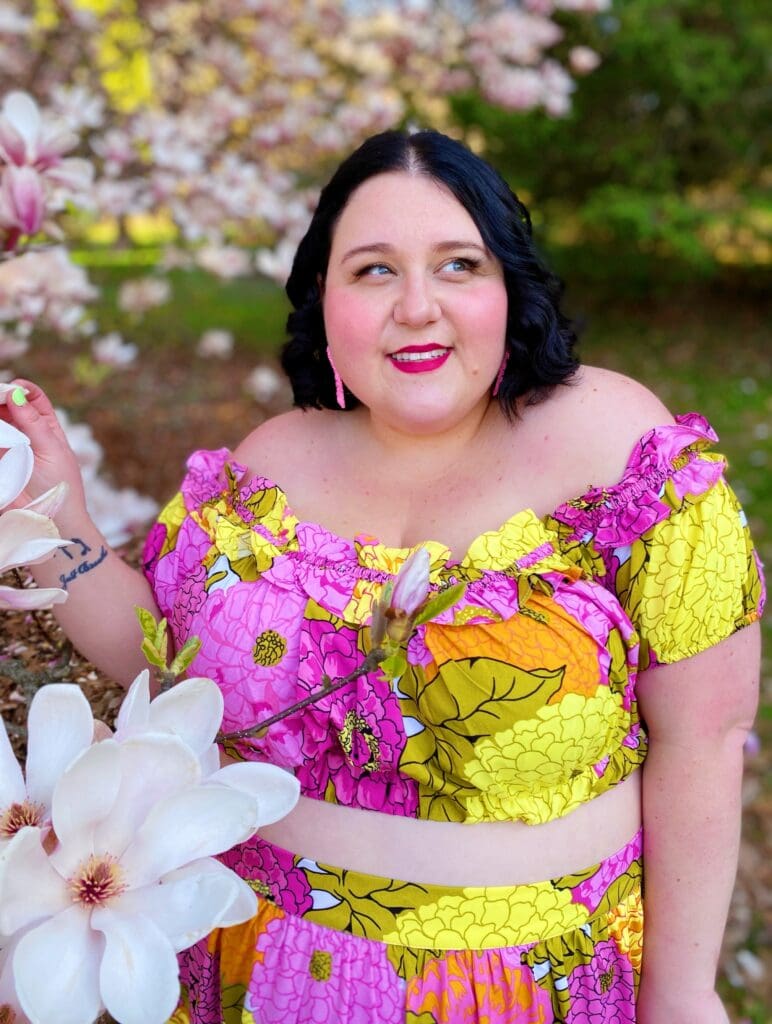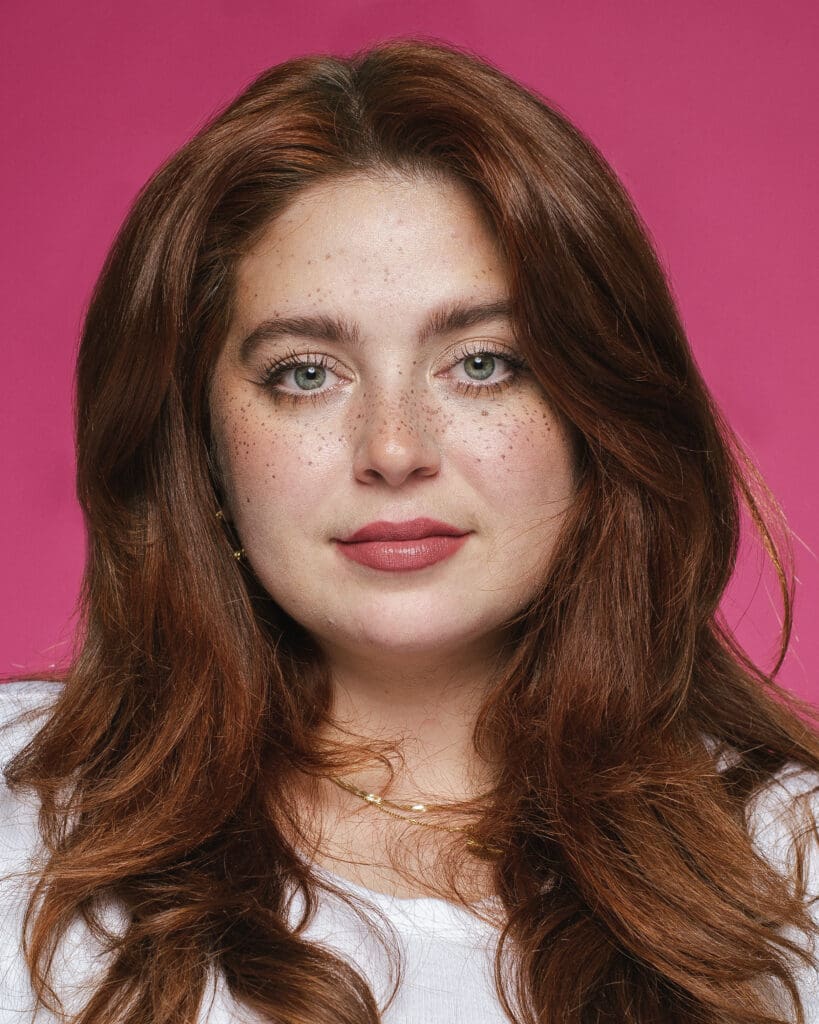Scroll through almost any makeup, skincare or bodycare brand’s social media, and it’s obvious that, for all the progress that has been made in recent years, beauty standards remain firmly stuck in the past. In the best-case scenario, digital content and ad campaigns might showcase a diverse range of skin tones. But, more often than not, the aspirational image we’re presented with is still a young, able-bodied, cisgender and—above all—thin woman.
Beauty products don’t come with a size tag, yet change has been slow when it comes to size diversity. The fashion industry has made some slow headway—we’ve seen curvy models on runways, extended sizing and more diverse marketing campaigns, particularly from indie brands. But the beauty industry still lags behind. “We just don’t really see plus-size people selling [beauty products],” says content creator Alicia Gilby of Curvy Chronicles. “We’ve been told that plus-size bodies aren’t marketable and desirable.”
Gilby runs a series on Instagram called Fat Auditing Beauty Brands, where she analyzes makeup companies’ social media feeds based on three criteria: how long she has to scroll before seeing a curvy person, the percentage of plus-size models or creators that are featured in a total of 50 posts showing people, and whether the brand includes anyone who looks like her, what she calls a “larger fat” (Gilby wears a size 26).
Results have been eye-opening for Gilby and her followers. So far, the brands she’s audited have ranged from zero to six per cent size inclusivity, with one standout featuring 22 per cent plus-size models and creators. No brand has featured someone close to her size. “It’s minimal effort on their part—they’ll use a model who is a size 14 or 16, which is still considered plus-size in the industry but is at the very low-end of the range,” she says. Plus-size folks with more acceptable features—such as curvy, hourglass figures and thinner face shapes—are favoured over those with round faces and stomach rolls. “We’re still not seeing true body diversity.”
For Stephanie Valentine, a plus-size creator who has been making beauty content under the name Glamzilla for over a decade and has worked with countless brands, inclusivity starts in the boardroom. “The people behind the brands need to look like us and know the importance of inclusivity to truly take a step forward in the beauty space,” she says. Jenn Harper, founder of Indigenous brand Cheekbone Beauty, echoes this sentiment, adding that part of being inclusive as an industry leader is recognizing your blind spots and actively working to overcome them. Even as a brand founder with the mission to empower those relegated to the sidelines of the beauty industry, she acknowledges that it’s not always easy. “I had a marketing manager early on that explained to me the importance of [featuring plus-size models] and it was a learning experience for me,” she says. “It’s actually really difficult, because you do get set in your patterns. It’s really important to be aware of it and figure out who is being left out of the conversation.”
And those who are actively seeking more diverse models might find it challenging to achieve their vision. Breann Rogers, executive assistant at Cheekbone Beauty, says the brand always aims to be relatable and approachable. “Even if you’re hiring a plus-size model, you’re still getting a cookie-cutter image of what everybody is looking for these days,” she explains. And when you’re looking to hire a plus-size model who’s a person of colour or part of an older demographic, the lack of diversity on agencies’ books is glaring. “It’s very apparent that the modelling industry still has a lot of work to do in casting models that look like us.”
Instead, like many smaller brands, Cheekbone has been relying on its community when creating content for its campaigns. The brand often casts its employees and customers, an approach that helps it create more content on shoestring budgets and reflects the broad diversity of its team and fan base. Inspired by her own experience, Harper has recently designed a wider face chart (which is used by makeup artists to plan looks before sessions or photoshoots) that more accurately represents her own facial structure and that of many of the models and creators her team works with, so they can see themselves represented behind the scenes as well.
Mainstream beauty brands continue to shape what’s seen as beautiful and perpetuate the idea that thin bodies are more desirable, contributing to—if not engineering—the systemic erasure of a large part of their consumer base. “Big organizations with huge budgets should be leading the way because they have the power to do so, and it’s truly tragic that that’s not happening,” deplores Harper. As a mom to an 18-year-old daughter who consumes media and is influenced by it, she believes it’s the beauty industry’s responsibility to showcase a full spectrum of diversity. Instead, it is perpetuating a standard that’s outdated and harmful.
Valentine believes the best way to fight this is by taking control of the narrative. “[Watching] one-minute videos every day can have a large impact on your self-worth and body image,” she says. She had never dreamed she could be a beauty creator because no one else in the space looked like her, but she now has 2.2 million followers on TikTok. “Spend that minute on someone or something that will empower you or make you feel better about yourself.”
Another way consumers can help move the needle, according to Harper, is by spending their hard-earned money with companies that reflect their values. It’s also worth engaging with brands you think could be doing more and providing feedback. In her videos, Gilby encourages her followers to reach out to brands and let them know they want to see more size diversity on their feeds. Eventually, she hopes brands will start to recognize that plus-size consumers deserve to feel beautiful and seen, and that she might see more bodies like her in advertising.
Valentine has a message for brand founders. “All humans want to feel included the first-time round—we aren’t an afterthought. If you feel like the step to true inclusion is ‘too far’ for your marketing teams and boardrooms, maybe that’s exactly the step you should take,” she says. “We all belong in beauty.” —Andréanne Dion




Be the first to comment